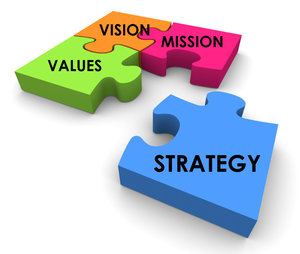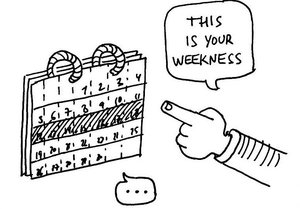Combining your passion with what you are best at
As a nurse, Esther gave the best she could to all her patients, her co-workers, and supervisors.  She was always willing to help, covering shifts for her colleagues, to the point she never had time for herself. This continued until Esther’s father suffered a myocardial infarction (heart attack), and she had to go through countless channels to get a few of her work shifts switched, some covered by others, and to obtain a few personal days, as she was the only child, in order to help care for her only parent.  This whole situation left Esther with a sense of disappointment, sadness, and also anger.  While caring for her father, mostly alone, for the first time, she had some time to think, reflect, and introspect.  For the first time, Esther started to wonder, “Why is my life getting so challenging? At times, I felt the easiest thing to do was to give up. Have I been living a purposeful life?â€Â Through reflection, Esther asked questions she had never before asked of herself. Ever since, in search for the answers to these questions, her life has never been the same. And she has been grateful.
Through three previous articles, we have been conversing about the why of living a life of purpose and the how of achieving it, using the formula of:
1.    Finding your passion (See Article)
2.    Finding what you are best at (See Article)
3.    Combining your passion with what you do best (Current article)
(See article, entitled, In Search of A Purpose for further and related reading)
After providing the steps, in order for you to find your passion and what you are best at, let us now take some time to learn how to best combine your passion with what you are best at. Â Here are the steps:
-
Compare your value priority list with your strength scale
-
Analyze any congruence and incongruence between your passion and what you are best at
-
Formulate a plan and implement
-
Formulate a plan for your weaknesses
Now, let us go through each step.
 Compare your value priority list with your strength scale
Compare your value priority list with your strength scale
Take the value priority list and strengths scale you created in the exercises in Article II and III of this series. Now, how do they compare with each other?  For example, take your number one passion listed in your value priority list, how does it match with your number one thing you are best at, listed in your strength scale? How many of such paired items do you have from both lists?  What’s your overall finding? Are you surprised? Take a break, think things through for a while, and come back for the next step.
Analyze any congruence and incongruence between your passion and what you are best at
In order to go through this second step, let’s use the following sub steps:
-
Take a look at your finding from Step 1 above and take two sheets of paper to list the congruences on
 one page and the incongruences on the other.
one page and the incongruences on the other. -
Look at each individually then side-by-side.
-
What are your thoughts on the congruences; how much of it is surprising to you and how much is something you would say you knew or expected?
-
How about the incongruences: What do you make of them? How much of them stems from the discrepancy between your childhood and now?
Please take the time to reflect as you go through these moments of self-discovery.
Formulate a plan and implement
You are determined to live a life with purpose, to find your passion, to find what you are best at, and to combine your passion with what you are best at.  With your findings, it is now time to formulate a plan and implement.  Formulating a plan to combine your passion with what you are best at is no different than formulating an overall work plan for any other project you may think of—business or otherwise.  As I suggested in the first article for this series, living a life with purpose helps give you a sense of vision, sets the destination and makes it easier for you to set goals and then reach them. Formulating and implementing a plan can be a tremendous booster.
a plan to combine your passion with what you are best at is no different than formulating an overall work plan for any other project you may think of—business or otherwise.  As I suggested in the first article for this series, living a life with purpose helps give you a sense of vision, sets the destination and makes it easier for you to set goals and then reach them. Formulating and implementing a plan can be a tremendous booster.
A detailed step-by-step roadmap on how to formulate a plan is beyond the scope and object of this article. However, in order help you jumpstart, here is a concise outline of the steps to follow in formulating your plan to combine your passion with what you are best at:
Set the purpose: This simply means be conscious of why you want to combine your passion with what you are best at.  In this case, your response might be, “To start living a life with purpose.† You can choose or not to spell out what this specific purpose is, but once you clarify your why, you will become more motivated to formulate and implement your plan. For example: Do you remember Ricardo, from the first article of this series? He went through the same series of exercises as you have by now, and after comparing his value priority list with his strength scale, one of his findings revealed his deep interest and proclivity for research and working with children with autism.  By formulating a plan, he was able to dedicate his life’s purpose to the development of an effective and efficient non-pharmacological treatment modality for children with autism who have aggressive behavior.
Set a goal: You know your why and your purpose; now, you want to have a goal around combining your passion with  what you are best at.  For example: In Ricardo’s case, in combining his passion and what he is best at, as part of his life’s purpose to help children with autism who have aggressive behavior, he needed to go back to his research, as part of the plan, something that used to put him in the flow.  As part of his goal, in order for him to be successful in achieving this goal, he needed to be sure to carefully craft it, using the acronym SMART (making sure his goal was Specific, Measurable, Achievable/Agreed upon, Realistic, and Timely).  In this case, his goal was framed as “50% of my 40 hours a week at my agency to be devoted to research, by December 31, 2010.â€
what you are best at.  For example: In Ricardo’s case, in combining his passion and what he is best at, as part of his life’s purpose to help children with autism who have aggressive behavior, he needed to go back to his research, as part of the plan, something that used to put him in the flow.  As part of his goal, in order for him to be successful in achieving this goal, he needed to be sure to carefully craft it, using the acronym SMART (making sure his goal was Specific, Measurable, Achievable/Agreed upon, Realistic, and Timely).  In this case, his goal was framed as “50% of my 40 hours a week at my agency to be devoted to research, by December 31, 2010.â€
Lay out the objectives: Objectives are the different steps required for achieving your goal; they are the successive signals telling you whether you are on the right path to achieving your goal. Â For example: In order for Ricardo to achieve his goals, some of his objectives included starting to devote a percentage of his time at his agency to do research, slowly increase that percentage of time, until he reached 50% of his time by December 31, 2010.
 Develop a strategy: You have a purpose, a related goal, and related objectives, but a strategy can make or break it all.  Think about strategy as the how of reaching your goal the most effective and efficient way.  As part of achieving his goal of having 50% of his time be devoted to research, Ricardo’s strategy was to obtain a K01 grant (Mentored Research Scientist Development Award) from which his 0.5 FTE (50% time) salary would come.
Develop a strategy: You have a purpose, a related goal, and related objectives, but a strategy can make or break it all.  Think about strategy as the how of reaching your goal the most effective and efficient way.  As part of achieving his goal of having 50% of his time be devoted to research, Ricardo’s strategy was to obtain a K01 grant (Mentored Research Scientist Development Award) from which his 0.5 FTE (50% time) salary would come.
Outline the tactics: The same way you need your objectives as part of your goal achievement plan, your tactics will serve this purpose for your strategy.  For example: As part of Ricardo’s strategy, his tactics included securing a smaller grant for a smaller scale project, leading to publications, laying the groundwork for his K01 grant application.
Have milestones with a timeline: Milestones are a series of steps to take between now and the deadline for your goal.  This interval between now and the deadline is your timeline, and you can have a specific timeline for each specific milestone.  Some of Ricardo’s milestones and timelines included starting to collaborate on some research projects, and starting an IRB protocol for his own research project.
Gather deliverables: Deliverables are essentially the outputs you expect to see by the time you have reached your goals.  They may be divided into several categories, as they relate to your goals.  For example: Some of Ricardo’s deliverables will include a mixed clinical and research career; working with the population he loves the most—children with autism; doing what he is most passionate about and what he is best at; and fulfilling his life’s purpose of striving to develop an effective and efficient non-pharmacological intervention for children with autism who have aggressive behavior.
Create a budget: Lastly, as part of formulating your plan, you will need a budget in place.  How much money will you need? What will be the source of this money?  When you decide to live your life with purpose and combining your passion with what you are best at, part of your strategy may mean devoting some time to learning new skills, or starting your own social impact enterprise, or volunteering. It may also mean learning a new language, travelling to a specific country, or making a new investment in yourself.  While the impact of Steve Job’s trip to India remains controversial, one incontestable fact remains that he went to India, he spent time introspecting, finding himself, and his life after return to the United States was never the same.  Lastly, as part of the budget, make sure you also account for your time, and not just for the money, for as you live a life with purpose, you will realize that time is more often than not more precious than money.  For example: In the budget section of his formulation and implementation plan, Ricardo added and blocked a few hours a week and planned his after work and weekend schedule to dedicate enough time to working on his research project.
need? What will be the source of this money?  When you decide to live your life with purpose and combining your passion with what you are best at, part of your strategy may mean devoting some time to learning new skills, or starting your own social impact enterprise, or volunteering. It may also mean learning a new language, travelling to a specific country, or making a new investment in yourself.  While the impact of Steve Job’s trip to India remains controversial, one incontestable fact remains that he went to India, he spent time introspecting, finding himself, and his life after return to the United States was never the same.  Lastly, as part of the budget, make sure you also account for your time, and not just for the money, for as you live a life with purpose, you will realize that time is more often than not more precious than money.  For example: In the budget section of his formulation and implementation plan, Ricardo added and blocked a few hours a week and planned his after work and weekend schedule to dedicate enough time to working on his research project.
Once you have a formulated plan, it becomes easier to implement, and the more you keep in mind the purpose, the vision, and the goal, the easier it becomes for you to withstand challenges and the expected moments of discouragement.
Now let us move on to the last step, Step 4, of combining your passion with what you do best.
 Formulate a plan for your weaknesses
Formulate a plan for your weaknesses
Know your strengths, know what you are best at, know your passion, and combine your passion with what you are best at, but consider your weaknesses, too. Here are a few steps for you to follow in order to do this:
-
Take the weakness scale you obtained from your related exercise from Article III, revisit it and give it some thoughts. What have you come up with?;
-
Compare these weaknesses to those you had when you were a child growing up (See previous articles for how to achieve this step);
-
Create a weakness priority list—all of your weaknesses. List them in the order of most important to least important for you to work on, if you were to decide to work on them;
-
Compare your list of weaknesses with your value priority list. Â For your list of weaknesses, is any one of them related to your passion; if so, which category, and how do you understand that; and what would you like to do about it?;
-
Take out your weakness priority list, and of the ones you listed as most important, which ones would you like to work on; why these as opposed to the others on your list?;
Once you are clear on the weaknesses you would like to work on and why, use the steps outlined above to formulate and implement a plan to work around your weaknesses.
Life has its challenges, and it has its sweet spots, too.  It has its highs and lows and at times one may wonder: What is life all about?  Why does life have to be so challenging? Regardless of your nationality, ethnicity, socio-economic background, and profession, you may have or will at some point pose these same questions. You can go about life wondering and wandering, or you can take some time, once and for all, and do some work to find your purpose in life by finding your passion and what you are best at, by combining the two of them and formulating and implementing a plan around it.  Living life with purpose helps keep your vision in place, sets a destination, and makes it easier for you to withstand life’s challenges.  Please bear in mind that a life with purpose gives you more flexibility in life instead of taking it away.  Further, finding your purpose and passion is like a vaccine, it strengthens your emotional immune system, it is a resilience-promoting factor, and it helps protect against depression, anxiety, and other physical and neuropsychiatric conditions.
If at least one of you can say you are now living your life with purpose, I will consider this series of articles a success. Â If you then decide to lend someone else the opportunity to read this article, with the hope that he or she will also start working on living a life with purpose, then you should consider yourself an agent of change.
You have been very patient, embarking on this journey with me in search of your life’s purpose, and I am very grateful.  I am sure you know by now this journey is just starting, and it is a worthwhile one.  Therefore, as we are closing this chapter, instead of goodbye, I would like to say until later.
Meanwhile, I would be honored if you could share your story with me, as you have embarked on this noble journey.
Until then,
Your friend,
Mardoche









